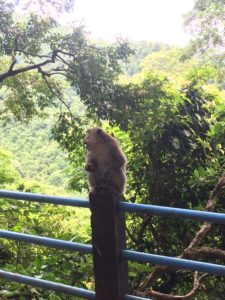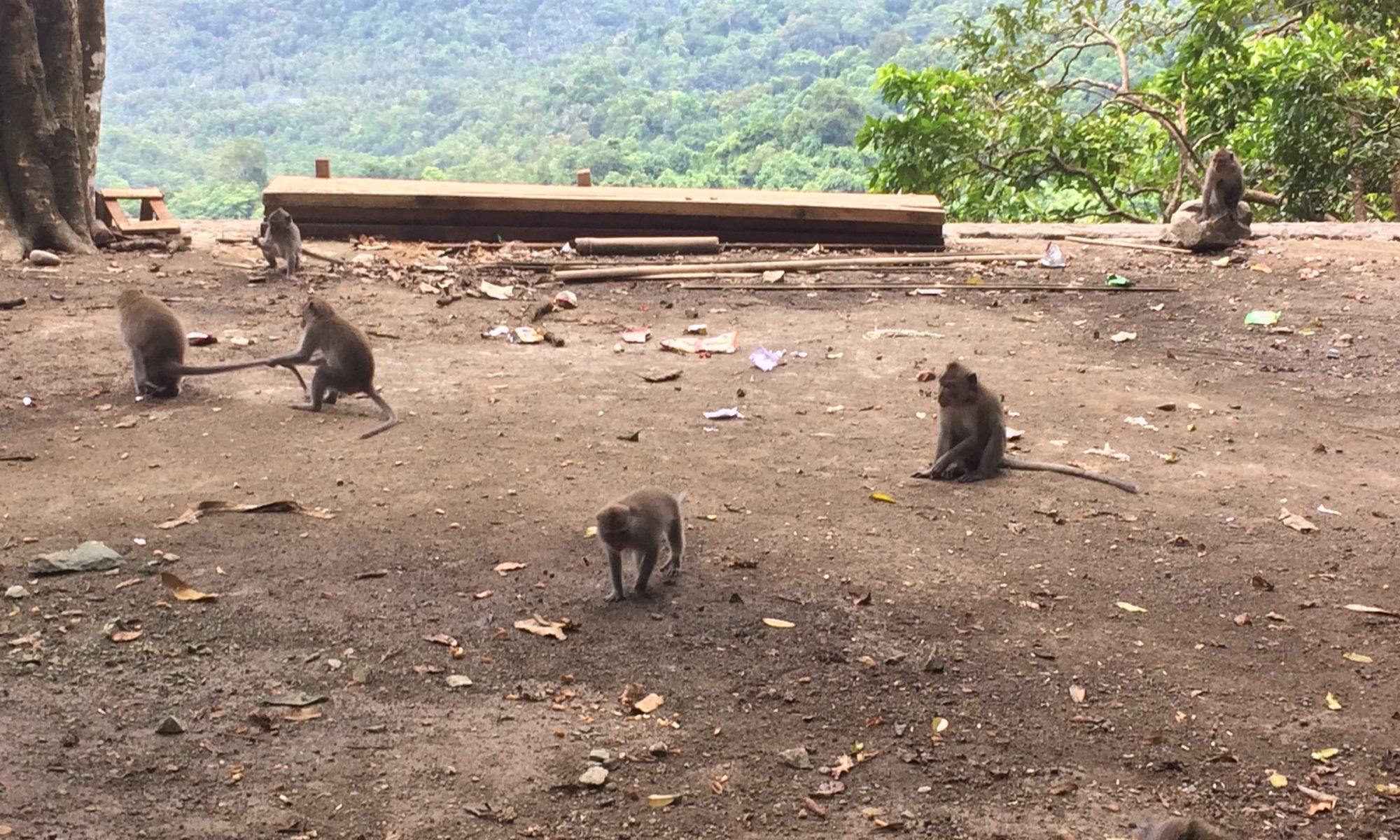[*DO NOT ACTUALLY DO THIS.]
When I was in high school, one of my two favorite teachers was my AP English teacher. He led us through all the themes and thought processes we would need to do well both on the AP exam and in general literary analysis. He was upfront and honest about how the all-school summer reading selection was not exactly high literature and so while he hoped we read and enjoyed it, he would not be wasting our time discussing it in depth. He had rap posters hanging up on the inside of the classroom’s closet door; he would never talk about them, but would just casually leave the door slightly ajar sometimes so we could see they were there. One time, he explained to us how to catch a monkey.
I don’t remember how this came up, but the background was that he had been in the Army and that, as some part of some training, he had learned how to survive if he ever found himself alone and on the ground in Vietnam. In terms of what to eat, in a foreign land with unfamiliar vegetation, the general recommendation was to capture a monkey and then eat what it eats. Because of the close relationship between humans and primates (he told us, refreshingly openly and matter-of-factly, in a Catholic school), chances are good that if something is safe for monkeys to eat, it will also be safe for humans. So how do you catch a monkey? It’s simple (in theory), he explained:
1. Find a coconut.
2. Cut a small hole in the coconut.
3. Put something shiny in the coconut.
4. Sit back and wait.
The monkey will be attracted by the shiny thing and it will reach into the coconut to grab it. The hole, small enough for an open monkey hand to fit through, will not be big enough for the monkey’s fist to fit through once it has grabbed the shiny thing. The monkey will NOT be willing to give up the shiny thing and so will remain with its hand caught in the coconut. This is important because monkeys are generally quick and agile and not easily caught. However, a monkey with its hand stuck in a coconut will be unbalanced and less able to move quickly and so will be easy to catch. And voila! You have now caught a monkey and can construct a leash to keep him on as he forages for food so that whatever he eats, you can (probably) eat too.
As the whole class was mulling this over and the teacher, having dropped this on us, was nonchalantly turning back to the lesson on the board, my best friend turned to me and said “You know, I bet I could catch you with a shiny thing in coconut too, if I ever needed to.”
And I’ve felt a special theoretical kinship with (/indignance on behalf of) monkeys ever since.
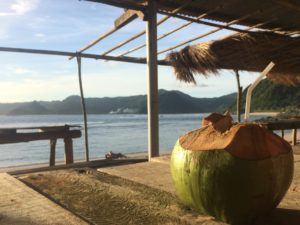
I was thinking about this recently in Indonesia, as I found myself standing next to my parked rental car actually surround by monkeys while C, one of my travelling companions, tried to hand feed them and M, my other traveling companion, was about 5 yards away running in circles and screaming.
We were driving from Kuta, Lombok to Bangsal in order to catch a ferry to Gili Meno. Along the way, the road started climbing, eventually turning to switchbacks through the forest, and, as we reached a clearing with a stunning overlook of the closest bay, we also realized we were surrounded by monkeys.
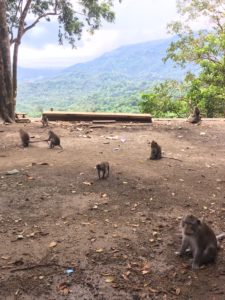
C sprung into action. He pulled over, parked the car, grabbed a handful of rambutan, and was out the door, just barely finishing his rapid-fire instructions (“no loose clothing and take your sunglasses off your head but bring your camera!”) before the door closed behind him. I dutifully took my sunglasses off and looked down at my camera (phone) wondering at the best way to attach it to myself. While I was doing this I opened the door at which point M nervously said, “imagine if one got in here…”
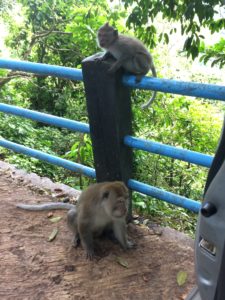
The idea was apparently too much for him, because he leapt out his own door making noises I wish I had recorded because they were epic and beyond description (although if I had to try and find the words, “really high pitched” would definitely be in there), crossed the street away from the monkeys and kept up a strategy of constant motion and loud noises to avoid any sort of monkey contact.
I was not nearly as bold as C (who had one take a rambutan right from his hand! Which, given our road trip snacking is just one more way I can relate to monkeys, I guess.) and I was REALLY aware of my lack of rabies vaccinations, but it was amazing standing so close. I saw a mom with her baby hanging off her.
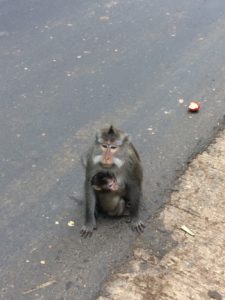
I watched them LEAP and play and watched them sit grooming each other. I watched the dynamics as they raced each other for food. I watched them watch us unnervingly contemplatively. And I watched as one waited until we were out of the car and then climbed up on top of it, where he patrolled around, I assume, claiming it as his own and baring his really sharp teeth at anyone (C) who got too close.
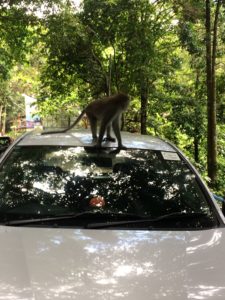
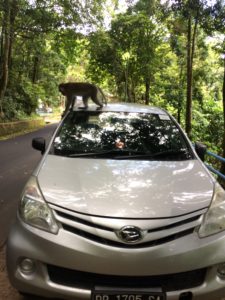
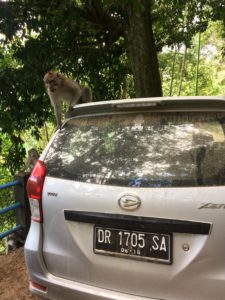
I definitely watched, camera raised, as C took a long loop around and successfully hopped back in the driver’s seat, at which point I realized I was now facing down the car snatcher alone (M was…?). C moved the car up a bit to where the crowd of monkeys wasn’t quite so thick and eventually M and I got back in the car.
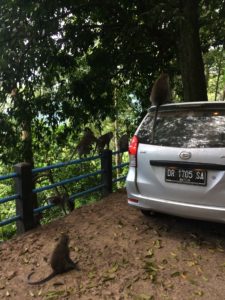
I have never been so close to monkeys before, and it was incredible. Their expressions are so human, but there is definitely never any question as to whether or not they are wild animals (definite yes). Still, given their alleged love of shiny things, confirmed love of rambutan, and superior skills in commandeering vehicles, if they were ever my key to survival in the wilderness, I think I’d be pretty confident in following their lead.
